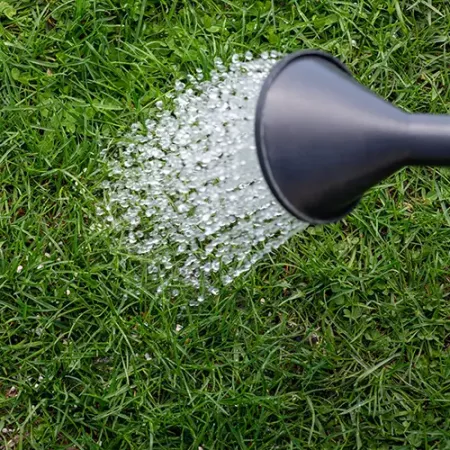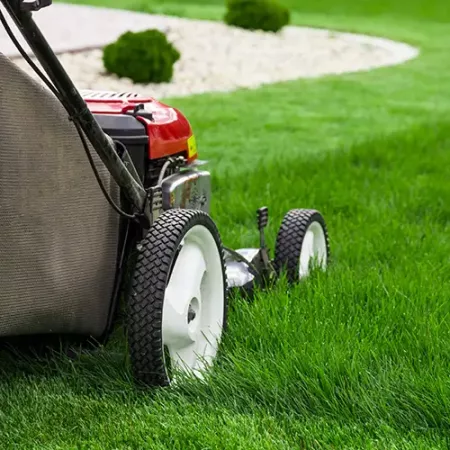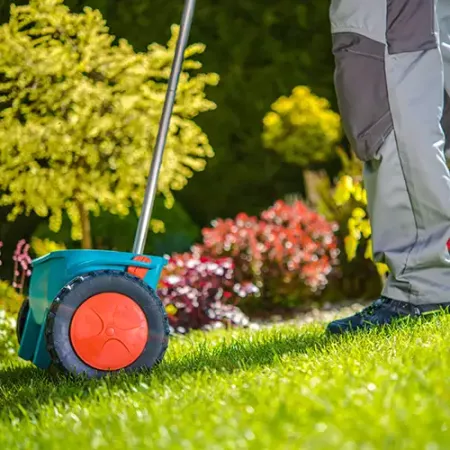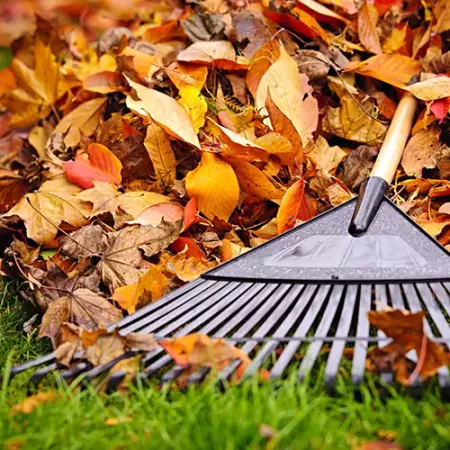Maintaining Your New Lawn
The appearance and health of your lawn will be affected by the environment it is living in and the treatment it receives. Therefore careful maintenance is a critical step in ensuring that you have a beautiful lawn for your enjoyment! Questions or would like to get a free quote? Please contact us.
Watering
Watering is the single most important step in successfully establishing your new lawn. During warm weather you should start watering sections of installed sod as you are laying the sod. To check if your sod needs water, lift up a corner of the sod. During the first 2-3 weeks the bottom of the sod should never be dry.
Not watering enough will cause wilting and dead spots and watering too much will cause poor root establishment and disease leading to dieback. The weather conditions, soil conditions and environment factors, such as shade, will have a large impact and should be considered in deciding how much you need to water. A physical inspection should ultimately determine your watering schedule; however the following schedule can be used as a guide.
- A good soaking on the first day to moisten the sod and topsoil.
- Light watering 2-3 times per day in the first 2 weeks or until the roots are established, to avoid the sod from drying out
- Once the roots are established and you have mowed the lawn for the first time, then you can likely go to daily watering early in morning.
- Continue to water early in the morning on fewer days, as you see fit or as local watering rules dictate. The less you water your lawn without causing stress to the grass the better.


Mowing
The first mowing should take place as soon as the sod is rooted in, which can be about 10-21 days after installation. To see if the sod is rooted in; try to pull up a piece of sod and see how tightly it is adhered to the topsoil. Make sure you always have a sharp blade on your mower. If you use a rotary mower we recommend collecting the clippings and composting them. If you use a reel mower you can leave the clippings provided that is does not leave clumps.
The mowing height should be set so that you do not remove more than 1/3 of leave blade per mowing. Mowing the grass too short will cause scalping, damaging the new lawn especially during the initial establishment period. When you receive your new lawn it has been maintained at 30mm or 1.25" at the farm. The new lawn can be maintained between 30-60 mm or 1.25 - 2.5", depending on the desired look. Adjust how often you mow according to how fast the grass grows, not removing more than 1/3 of the leaf blade at one time. If the lawn has become too long bring the height down gradually to the correct height.
Feeding
It is important that your lawn receives sufficient nutrients for a beautiful and healthy lawn. We recommend that you fertilize the new sod at the time of installation with "Sod or Seed Starter" fertilizer at the recommended label rate. After establishment we recommend feeding your lawn at 4-6 week intervals from March - October. Use a summer fertilizer form March—July and fall fertilizer from August—October. To determine the amount and frequency of feeding your lawn, look at the amount growth you see and the general appearance. Regular balanced feeding is the key to having a beautiful healthy lawn.


Annual maintenance
Spring
Your lawn may have accumulated moss especially if it does not get full sunlight or there may be general thinning of the grass after the winter. You can apply moss killer, leaving it some time for the moss killer to take effect before moving to the next step. If you observe thinning of the lawn then you should power rake the lawn, remove all the dead grass and overseed. Following overseeding you may want to lightly top dress with a turf blend soil or sand to cover the seed. If you are experiencing poor drainage then you should aerate your lawn followed by removal of cores and dead grass, then overseed and topdressing with sand. The ideal time for over seeding is during March-April.
Fall
During the fall if you have experienced overall turf decline you may repeat some of the spring maintenance procedures. The ideal time to over seed in the fall is early September. Tree leaves should be removed from your lawn and the grass should not be left too long as this will cause the grass to get matted down and cause bare patches.
Looking for Residential Sod?
View our coastal sand based sod and measuring guide for more information and contact us with any questions or
